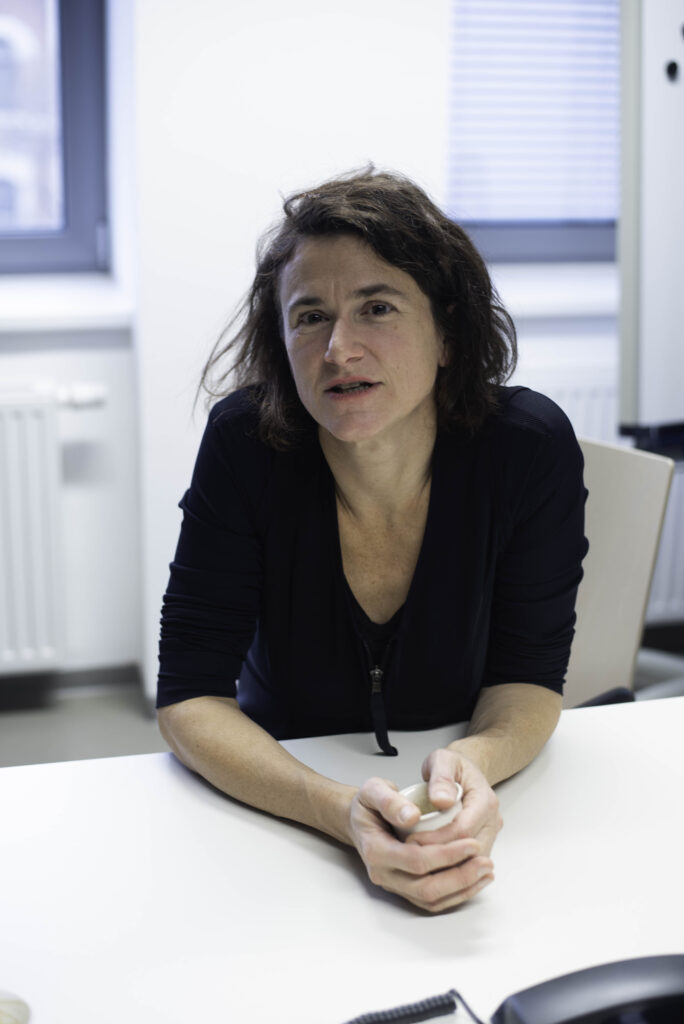Handeln statt Kriminalisieren (handeln-statt-kriminalisieren.com)
Research
My main research area lies in the field of applied and computational harmonic analysis, audio signal processing, mathematics of machine learning (convolutional neural networks and deep learning), time-frequency analysis, sampling and approximation theory. Thereby, I am interested in both theoretical and numerical aspects of various flexible signal and image representations and in particular in the impact of new representations on real-life applications.
In this respect, I have been able to achieve results which led to methods of significant importance for the community, e.g. a flexible signal transform based on non-stationary Gabor frames.

My recent publications:
(for a complete publication list see https://nuhagphp.univie.ac.at/home/publication_doerfler.php )
[1] R. Bammer, M. Dörfler, and P. Harar. Gabor Frames and Deep Scattering Networks in Audio Processing,. Axioms, 8,(4), 2019. doi:https://doi.org/10.3390/axioms8040106.
[2] Anna Breger, Jose Ignacio Orlando, Pavol Harar, Monika Dörfler, Sophie Klimscha,Christoph Grechenig, Bianca S Gerendas, Ursula Schmidt-Erfurth, and Martin Ehler. On orthogonal projections for dimension reduction and applications in augmented target loss
functions for learning problems. Journal of Mathematical Imaging and Vision, 62:376–394, 2020. doi:https://doi.org/10.1007/s10851-019-00902-2.
[3] E. Cordero, Maurice de Gosson, M. Dörfler, and F. Nicola. Generalized Born–Jordan Distributions and Applications. Advances in Computational Mathematics, 46(51), nov 2020. doi:https://doi.org/10.1007/s10444-020-09788-w.
[4] Elena Cordero, Maurice de Gosson, Monika Dörfler, and Fabio Nicola. On the symplectic covariance and interferences of time-frequency distributions. SIAM J. Math. Anal.,
50(2):2178–2193, 2018. doi:10.1137/16M1104615.
[5] Elena Cordero, Maurice de Gosson, Monika Dörfler, and Fabio Nicola. Signal Analysis Using Born–Jordan-Type Distributions, pages 221–241. Springer International Publishing, Cham, 2021. doi:10.1007/978-3-030-69637-5_13.
[6] M. Dörfler. Learning how to Listen: Time-Frequency Analysis meets Convolutional Neural Networks. Internationale Mathematische Nachrichten, 1, March 2019. doi:10.13140/RG.2.2.28319.20641.
[7] M. Dörfler, R. Bammer, A. Breger, P. Harar, and Z. Smekal. Improving Machine Hearing on Limited Data Sets. In Proceedings of ICUMT 2019. IEEE, November 2019. doi:10.1109/icumt48472.2019.8970740.
[8] Monika Dörfler, Thomas Grill, Roswitha Bammer, and Arthur Flexer. Basic filters for convolutional neural networks applied to music: Training or design? Neural Computing and Applications, 32:941–954, 2020. doi:https://doi.org/10.1007/s00521-018-3704-x.
[9] Monika Dörfler, Franz Luef, Henry McNulty, and Eirik Skrettingland. Time-Frequency Analysis and Coorbit Spaces of Operators. arXiv preprint, 2022. doi:arxiv:2210.04844.
[10] Monika Dörfler, Franz Luef, and Eirik Skrettingland. Local structure and effective dimensionality of time series data sets. arXiv preprint3, 2021. doi:https://doi.org/10.48550/arXiv.2111.02153.
[11] Arthur Flexer, Monika Dörfler, Jan Schlüter, and Thomas Grill. Hubness as a case of technical algorithmic bias in music recommendation. In 2018 IEEE International Conference
on Data Mining Workshops (ICDMW), pages 1062–1069, 2018. doi:10.1109/ICDMW.2018.00154.
[12] Pavol Harar, Dennis Elbrächter, Monika Dörfler, and Kory D. Johnson. Redistributor: Transforming empirical data distributions. 2022. URL: https://arxiv.org/abs/
2210.14219, doi:10.48550/ARXIV.2210.14219.
[13] S. Lattner, M. Dörfler, and A. Arzt. Learning complex basis functions for invariant representations of audio. In Proceedings of ISMIR19, November 2019. doi:doi.org/10.48550/arXiv.1907.05982.2
Some selected special research achievements…
- Best Paper Award ISMIR19 (Learning Complex Basis Functions for Invariant Representations of Audio, S. Lattner; M. Dörfler; A.Arzt)
- aMOBY – Acoustic Monitoring of Biodiversity, Co-PI, WWTF
- SALSA, Interdisciplinary project with OFAI, PI, WWTF
- Audio-Miner, Interdisciplinary project with OFAI, PI, WWTF
- Hertha Firnberg-grant P21247 , PI, FWF
- Best Paper Award (Gold, DAFx-11, Constructing an invertible constant-Q transform with nonstationary Gabor frames.; G.A. Velasco, N. Holighaus, M. Dörfler, and T. Grill. )
- Co-Organisation of DAFx 2020, Vienna, Austria
- Co-Organisation of Sampta19, Bordeaux, France
- Organization of Workshop at the Erwin Schroedinger International Institute for Mathematics and Physics in Vienna. (Systematic approaches to deep learning methods for audio), 2017
Welcome!
17th March 2023. We finally submitted our project proposal “Filter them all! Gabor theory for image quality assessment” to FWF. Keep your fingers crossed for us!